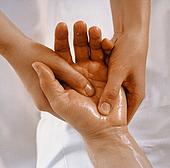What is body contouring?
Many people will lose massive amount of fat, but are then left with sagging skin. Body contouring is a procedure that aims to removes the excessive skin, tighten, and tones the appearance of skin in the areas where it might be sagging after massive weight loss.
The results are people that are more confident and look leaner, with smoother contours and tones.
Who is it for?
Good candidates for the body contouring procedure are, adults with stabilized weight loss. But also non-smokers and people without medical condition that can impact the healing and which are not at risk during surgery.
The areas that a surgeon will treat are:
- The back
- Lower abdomen
- Thighs
- Groin
- Breast
- Arms
- Buttocks
What procedure is used?
There is not really a standard template that a surgeon will use, as each case is different. But body contouring will involve targeting the problem areas. It can be a combination of the different procedures that are done. If different procedures are needed, they are normally done in stages. Each will have their own risk and recovery times. However a full body contouring can be done, and it is called an extreme body makeover, and will include all the procedures of body contouring. They are:
- Arm lift, to remove the sagging skin of upper arms. The arms, from the elbow to shoulder, are toned by removing loose skin, and tightening the tissues and remaining skin for a more natural contour.
- Body lift. The procedure addresses the fat on the buttocks, hips, abdomen and thighs and the sagging skin in these areas.
- Tummy tuck, to remove the apron of excess skin. This procedure aims at sculpting and toning the abdomen by tightening the muscles, tissues and skin and removing the excess skin.
- Buttock lift. This procedure involves pulling the skin at the buttock upwards and removing the excess skin. An implant or fat transfer can also be done to create more rounder looking buttocks.
- Breast lift, to correct sagging or flattened breasts. This is to lift the breast to a more youthful position. Excess skin is removed and the skin is tighten. The nipple and also be relocated, if it is needed.
- Face lift. To remove the sagging skin around the neck and jaw line.
Bandages and dressings will be applied to your incisions after the doctor is done with the procedure.
The doctor also may temporarily place small, thin tubes be placed under the skin to drain any excess blood or fluid that may collect in the areas that were treated.
Your doctor will also provide you with instructions that that you need to follow. They may include:
• How to care for the surgical area
• Prescribe you some medications for the healing and for pain
• And arrange for a follow up visit.
What are the risks of body contouring?
Body contouring involves surgery, therefore there will be risks and complications. These risks can include:
• Infection
• Bleeding
• Skin loss
• Poor wound healing
• Scarring
• Anaesthesia risks
• Changes in skin sensations
• Blood clots and deep vein thrombosis
• Fluid accumulation
It is not only important to make use of a well-respected surgeon to do the surgery, but during the consultation to discuss the risks and complications so that you can make an informed decision before undergoing this procedure. But your doctor should also analysis your risk factors. It might be that an alternative procedure might be better for you based on your health issues.
Possible problems
Post the procedure your doctor will instruct you to avoid bending, straining or lifting for several days to weeks. Plus, where there is tightening of the abdomen or thighs involved, they may instruct you to avoid standing fully upright and stressing any internal sutures as they heal, and to sleep with pillows elevating your knees. That is since it is vital that the surgical incisions are not subjected to excessive force, motion, swelling or abrasion during the time of healing. More so, to reduce your risk for developing blood clots in your legs, which can cause serious complications, you will need to be up and walking as soon as possible, and drinking plenty of fluid.
As with all surgeries there aren’t any guarantee that the results may come out like you want it. You should be realistic and discuss your case in detail with your surgeon. In addition, it can be that to come to the near results you are looking for, a second procedure might be needed.




